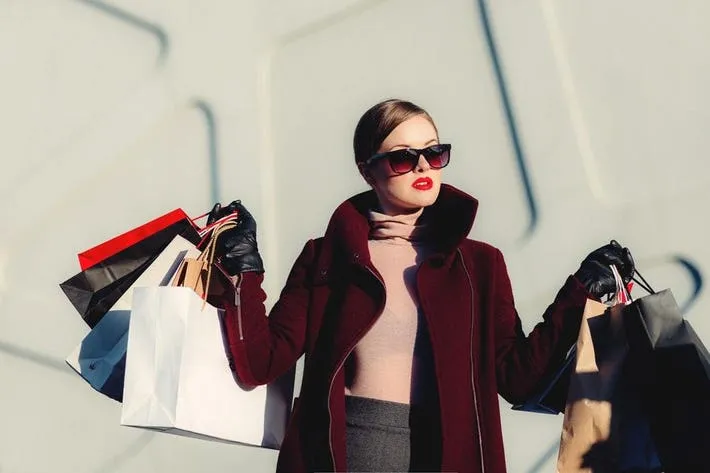The Luxury of Panic: How Millennials Made Anxiety a Lifestyle Brand
In 2025, financial analysts, sociologists, and lifestyle commentators note a striking phenomenon: Millennials have transformed anxiety into a profitable lifestyle brand. From curated Instagram posts to boutique wellness retreats, from NFTs featuring panic-inspired art to “stress couture” fashion lines, the generation once derided for existential dread has found ways to monetize its own nervous energy. Bloomberg, The Economist, and Reuters all highlight that this cultural pivot is simultaneously a reflection of societal pressures and a masterclass in branding.
The Social Media Economy of Anxiety
Social platforms are central to the trend. Analysts report that influencers post carefully curated images of “productive panic” , messy desks, latte-fueled coding marathons, and conference call chaos — while promoting workshops, apps, and merchandise.
Metrics matter: likes, shares, and engagement rates are interpreted as indicators of collective stress resonance. Analysts note that anxiety, once private, has been transformed into social currency, with followers seeking relatability, community, and even aspirational panic aesthetics.
Wellness Meets Worry
Ironically, the commercialization of anxiety intersects with wellness. Analysts observe a proliferation of meditation apps, aromatherapy products, and high-end retreats marketed specifically to stressed Millennials.
“Stress management” has been gamified: wearable devices monitor heart rates and send alerts when panic peaks, offering guided exercises in exchange for subscription fees. Analysts suggest that this approach monetizes both the problem and the solution, creating a self-sustaining anxiety economy.
Fashion and Panic Couture
Luxury brands have embraced the trend, designing apparel that signals high-functioning panic. Analysts report collections featuring “pre-work dread” sweatshirts, “deadline chic” blazers, and accessory lines inspired by caffeine consumption and overwork.
Marketing campaigns lean into irony, portraying anxiety as aspirational rather than debilitating. Analysts highlight that this strategy resonates with a generation accustomed to performing both success and stress online, blurring the lines between lifestyle and neurosis.
Financial Markets and Panic Branding
Wall Street and venture capital have not ignored the opportunity. Analysts note investments in stress-tracking startups, anxiety-oriented social media apps, and experiential marketing ventures.
Capital flows toward products that cater to curated stress experiences: VR “panic rooms,” limited-edition stress toys, and AI-powered journaling apps that analyze mood and provide monetized insights. Analysts suggest that anxiety has been commodified with the precision and sophistication typically reserved for luxury goods.
Cultural Commentary and Satire
Humor plays a critical role. Analysts report memes, TikTok videos, and satirical think pieces lampooning the phenomenon , depicting stressed influencers sipping artisanal coffee while simultaneously meditating, or using spreadsheets to manage emotional wellbeing.
Satire reinforces cultural awareness, providing a lens for critical engagement with the commercialization of anxiety. Analysts note that the humor highlights both the absurdity and the ingenuity of monetizing one’s own stress.
Media and Entertainment Integration
Streaming platforms and podcasts feature anxiety-centric content, from dramatized accounts of overwork to curated “panic playlists.” Analysts report that content creators leverage narrative tension to drive engagement, while advertisers capitalize on the emotive connection to sell wellness products, fashion, and lifestyle subscriptions.
The result: a feedback loop where anxiety content generates attention, engagement, and monetization simultaneously, reinforcing the brand value of stress.
Workplace and Lifestyle Implications
Analysts observe that workplaces have adapted, offering branded “stress sabbaticals,” mindfulness workshops, and wellness credits. These initiatives acknowledge the high-anxiety environment while monetizing coping mechanisms, subtly embedding the lifestyle brand within corporate culture.
For Millennials, anxiety has become a signal of ambition, productivity, and cultural relevance. Analysts suggest that this normalization of stress as aspirational challenges traditional notions of work-life balance and wellness.
Global Influence and Market Trends
The phenomenon extends internationally. Analysts note that Asia, Europe, and North America report similar branding strategies, from stress-themed cafés in Tokyo to anxiety-inspired fashion lines in Paris and experiential workshops in New York.
Global investors are funding platforms that curate stress experiences, demonstrating that anxiety-as-lifestyle is not merely cultural but also economically scalable. Analysts highlight that the market recognizes emotional engagement as a revenue driver, translating existential unease into tangible financial growth.
Critiques and Ethical Considerations
Despite success, the trend faces criticism. Analysts point out potential risks, including normalization of mental health challenges, commodification of distress, and exacerbation of stress through social comparison.
Mental health professionals caution that lifestyle branding of anxiety may trivialize serious psychological issues, and ethical frameworks for marketing such products remain underdeveloped. Analysts emphasize the importance of balancing commercialization with responsibility.
Future Outlook: Anxiety as Currency
Looking ahead, analysts predict that anxiety branding will continue evolving. Expect AI-driven personalized stress management products, immersive VR panic experiences, and further integration of anxiety themes into fashion, media, and corporate culture.
The trend reflects a generation’s ability to convert lived experience into marketable identity, creating a cultural and financial ecosystem around emotional states. Analysts suggest that future economic and cultural analysis must account for affective branding as a legitimate driver of consumption.
Conclusion
The 2025 landscape demonstrates that Millennials have turned anxiety into both a lifestyle and a business model. Analysts agree that the phenomenon reflects ingenuity, adaptation to socio-economic pressures, and a sophisticated understanding of cultural trends.
By embracing stress, curating it for social platforms, and monetizing coping mechanisms, Millennials have effectively transformed panic into an aspirational, consumable brand. Analysts suggest that the success of this movement lies in its ability to integrate humor, relatability, and commercial strategy, creating a cultural ecosystem where anxiety is simultaneously personal, performative, and profitable.
In the end, the luxury of panic is a paradox: it exposes vulnerability, entertains, and generates revenue, proving that in 2025, even stress can be a high-demand commodity.




